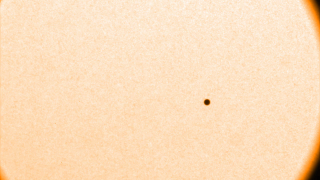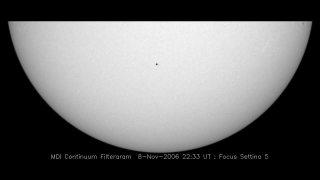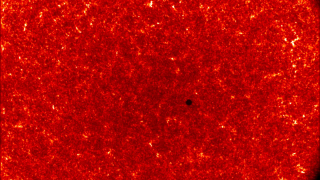Planets and Moons
ID: 12207

On May 9, 2016, Mercury will pass between Earth and the sun in a rare astronomical event known as a planetary transit. Starting at 7:16 a.m. EDT, Mercury will appear as a tiny black dot against a blazing backdrop, traversing the sun’s disk over seven and a half hours. Skywatchers in Western Europe, South America, and eastern North America will be able to see the entirety of the transit. Although Mercury whips around the sun every 88 days—over four times faster than Earth—the three bodies rarely align. Because Mercury orbits in a plane 7 degrees tilted from Earth’s orbit, it usually darts above or below our line of sight to the sun. As a result, a Mercury transit happens only about 13 times a century. (The last one was in 2006, and the next one isn’t until 2019.) The views recorded by NASA’s sun-observing spacecraft during the May 9 transit will help scientists to calibrate their instruments and improve their data analysis software. Explore the images to learn more.

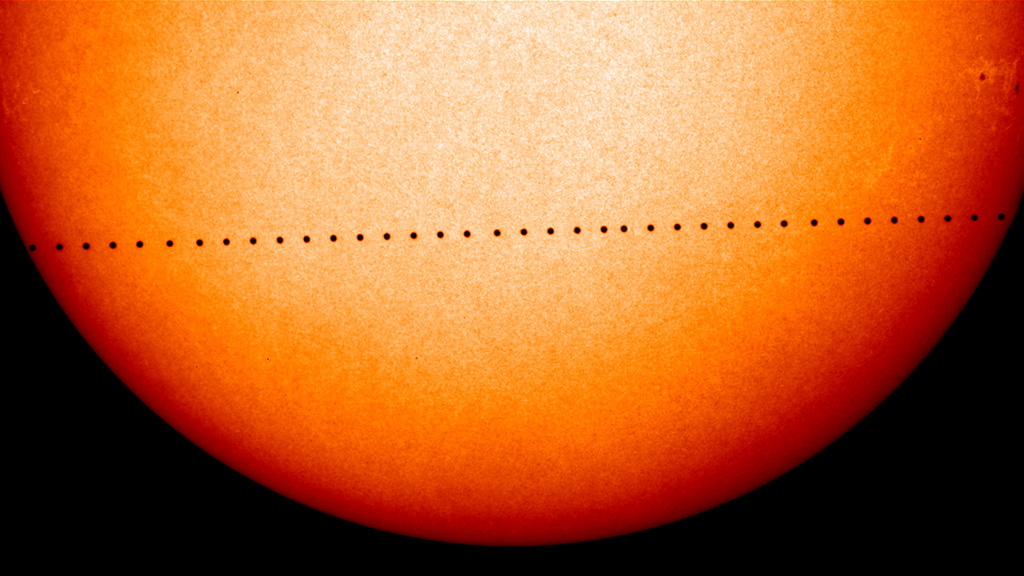

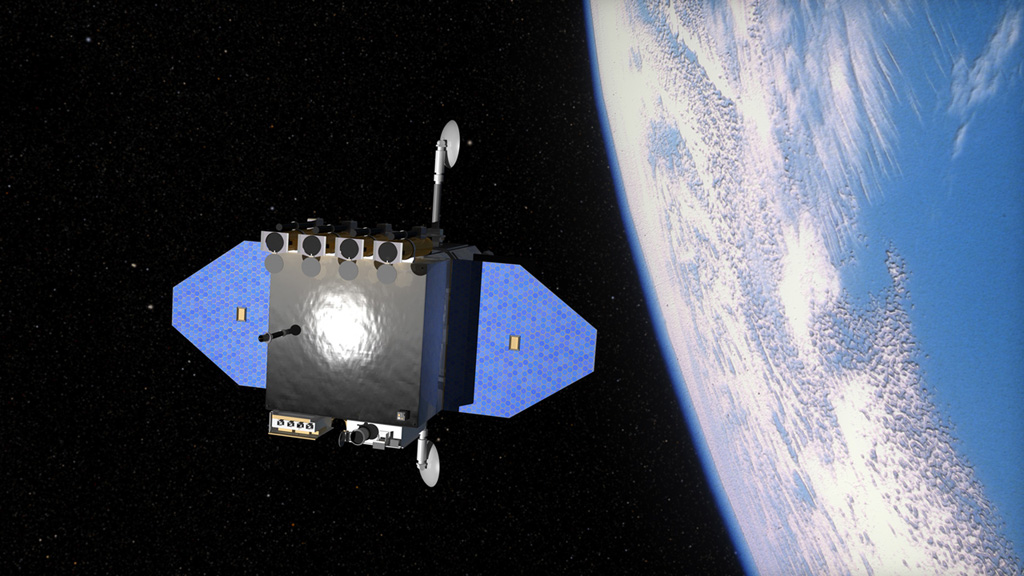
Mercury In Our Sights





Source Material
Story Credits
Scientists:
David Rothery (The Open University)
Zachery Berta-Thompson (MIT)
Lead Writer:
Alison Takemura (USRA)
David Rothery (The Open University)
Zachery Berta-Thompson (MIT)
Lead Writer:
Alison Takemura (USRA)
Please give credit for this item to:
NASA's Goddard Space Flight Center
NASA's Goddard Space Flight Center
Short URL to share this page:
https://svs.gsfc.nasa.gov/12207
Keywords:
SVS >> App
NASA Science >> Planets and Moons
https://svs.gsfc.nasa.gov/12207
Keywords:
SVS >> App
NASA Science >> Planets and Moons
